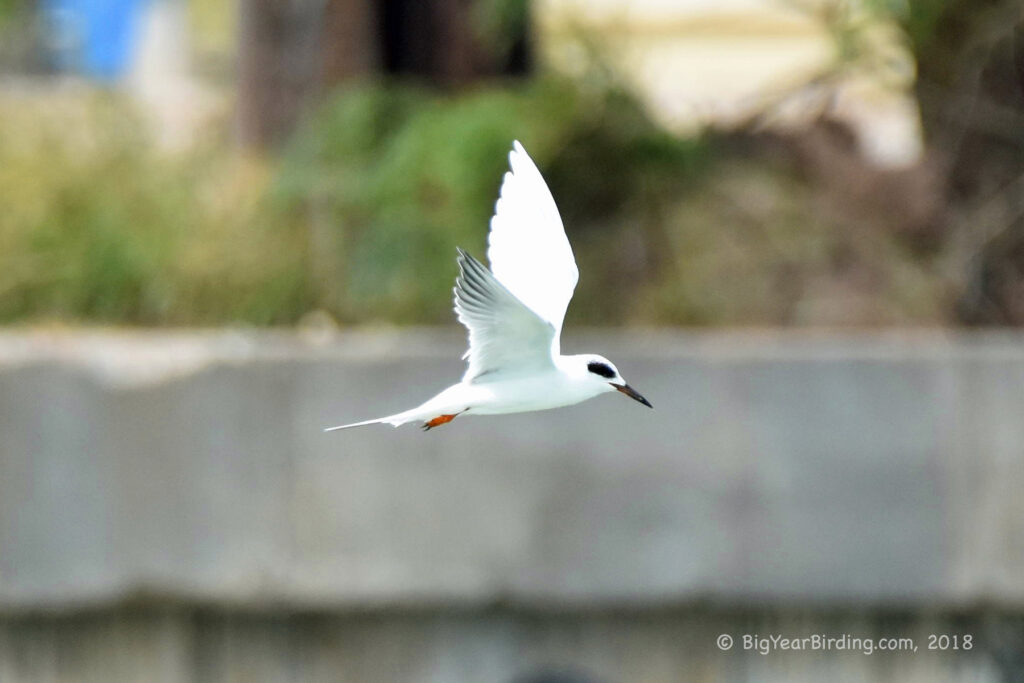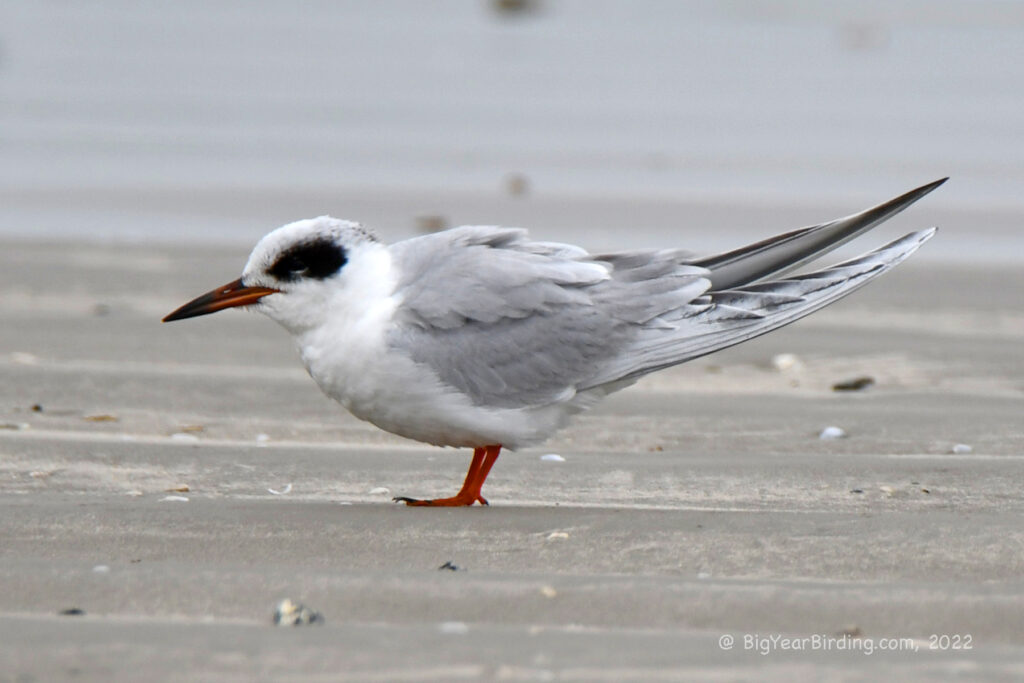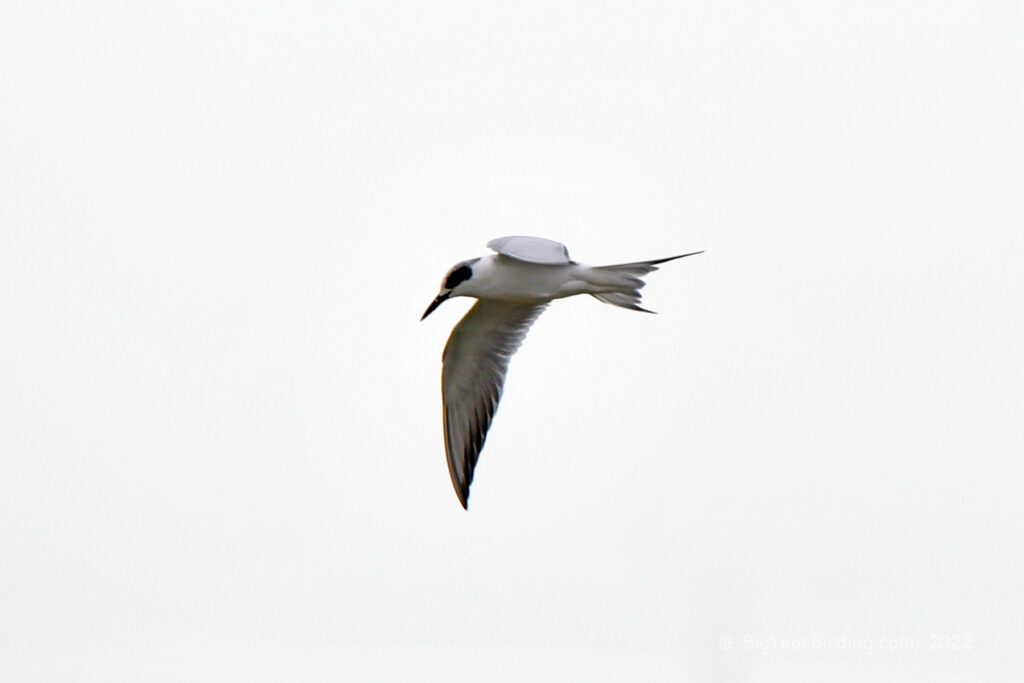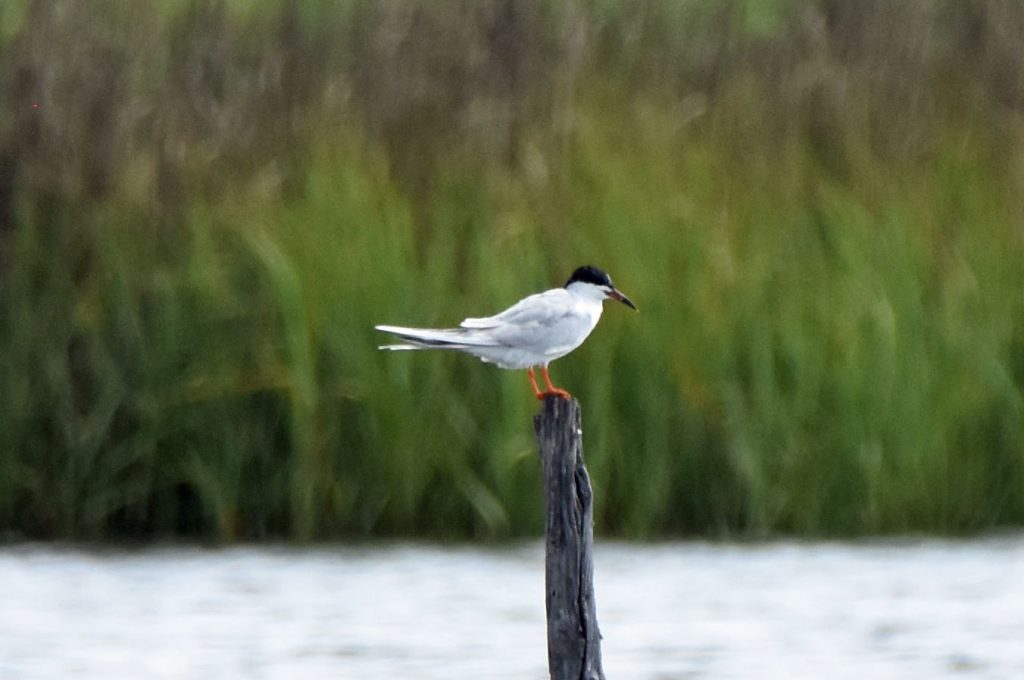
The Forester’s Tern (Sterna forsteri) is a medium-sized seabird, measuring around 14-16 inches in length, with a wingspan of 30-32 inches. Adult birds weigh between 3.5-4.5 ounces, with males typically being slightly larger than females. They have a slender, streamlined body with a deeply forked tail, which makes them easily identifiable in the field.

Distinguishing field marks of the Forester’s Tern include a black cap that extends down the nape of the neck and a contrasting white forehead. They have a white body, wings, and tail, and their bill is bright orange with a black tip. In breeding plumage, their bill turns reddish-orange at the base, and their legs are also reddish. Juvenile birds have a brownish-gray back and a less distinctive black cap.
The Forester’s Tern breeds along the Atlantic and Gulf coasts of North America, from Maine to Texas. They also breed in some inland areas, such as the Great Lakes region. During the breeding season, they can be found nesting in colonies on sandy beaches, marshes, and islands. They migrate to South America for the winter, with some birds traveling as far as Argentina.
During migration, Forester’s Terns can be seen along the eastern and western coasts of North America, as well as inland along major rivers and lakes. They typically arrive on their breeding grounds in late April and early May and begin to depart in late August and September. During migration, they feed on small fish, crustaceans, and insects, which they catch by diving into the water from the air.

In recent years, Forester’s Tern populations have declined due to habitat loss, pollution, and climate change. Conservation efforts, such as habitat restoration and protection, have been implemented to help stabilize their populations. The Forester’s Tern is considered a species of special concern in many states, highlighting the need for continued monitoring and conservation efforts.

